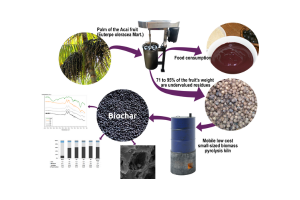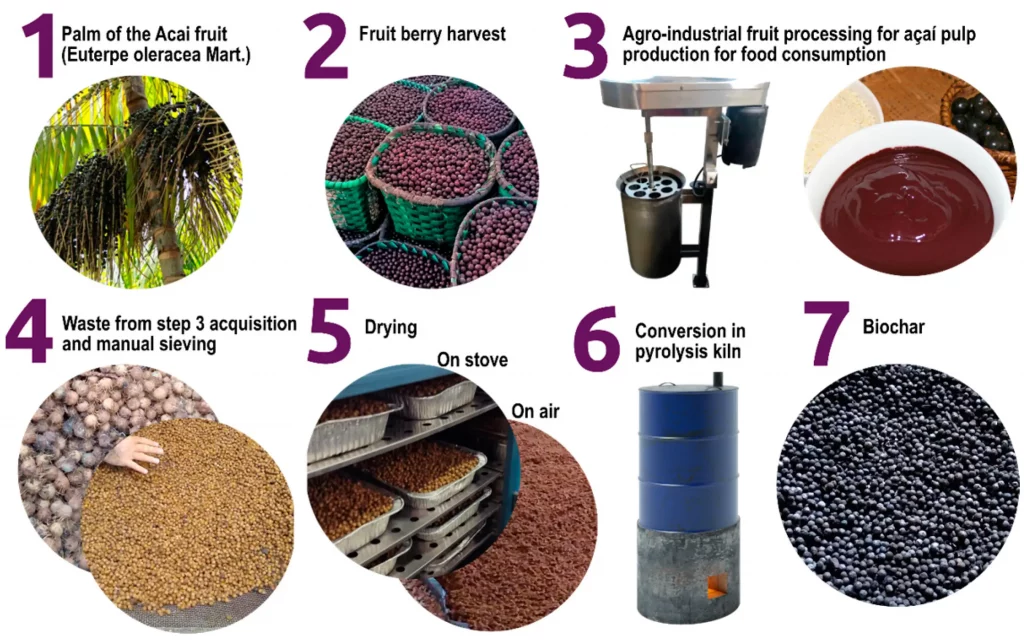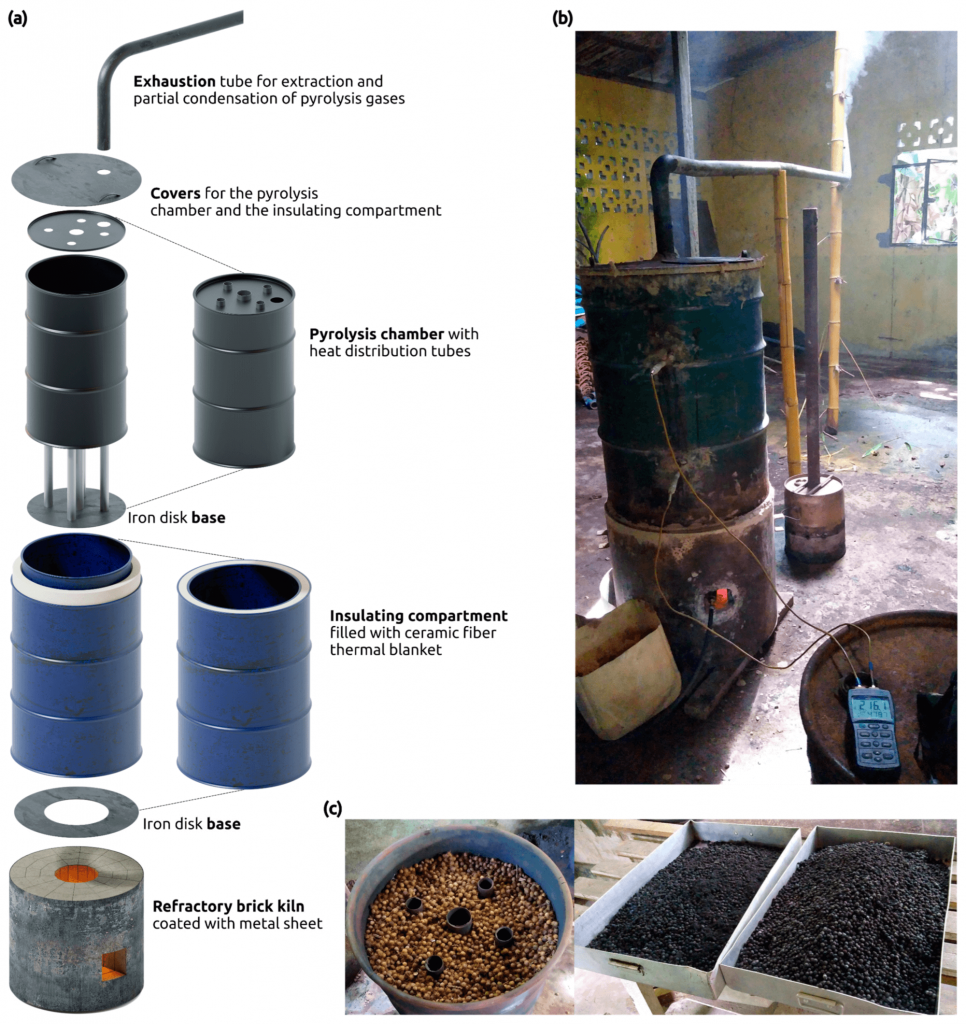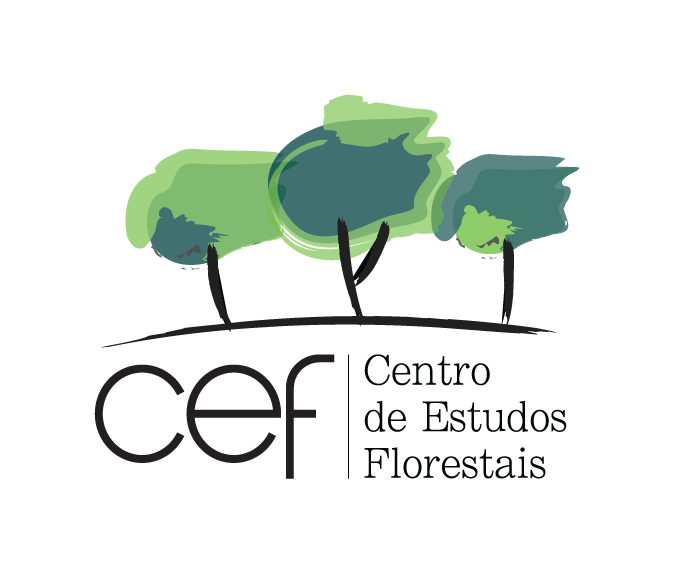
Members of the Forest Research Centre (CEF) Vinicius John, Ana Rita de Oliveira Braga, Criscian Kellen Amaro de Oliveira Danielli, Filipe Eduardo Danielli and Cláudia Marques-dos-Santos take part in a study that characterizes the biochar produced in a mobile handmade kiln from small-sized waste biomass.
“Characterization of Biochar Produced in a Mobile Handmade Kiln from Small-Sized Waste Biomass for Agronomic and Climate Change Benefits” is the title of this new article, which demonstrates that handmade production can generate high-quality biochar for agricultural use. The research shows that this practice contributes to improving the environmental quality of soils and to combating climate change, both in terms of mitigation and adaptation.

An artisanal mobile pyrolysis kiln was developed for small-sized biomass inputs. Approximately 190 kg of biochar was produced in 21 carbonisation processes using acai residues (Euterpe oleracea Mart.) as raw material, as they are among the most abundant agro-industrial residues in the Amazon.
Variations in nutrient contents call for soil application planning, as performed for other agricultural inputs. The developed mobile kiln can be adapted and favour the decentralisation of biochar production among small and medium-sized producers. Here, we show that even with variations in artisanal production, the biochar produced exhibits favourable characteristics for agronomic use and combating climate changes.

This article was published in the international journal on agronomy and agroecology, published monthly online by MDPI, Agronomy, and is part of the special issue Waste to Wealth: Resource Utilization of Agricultural Waste through Effective Biomass Management – full article available here.














